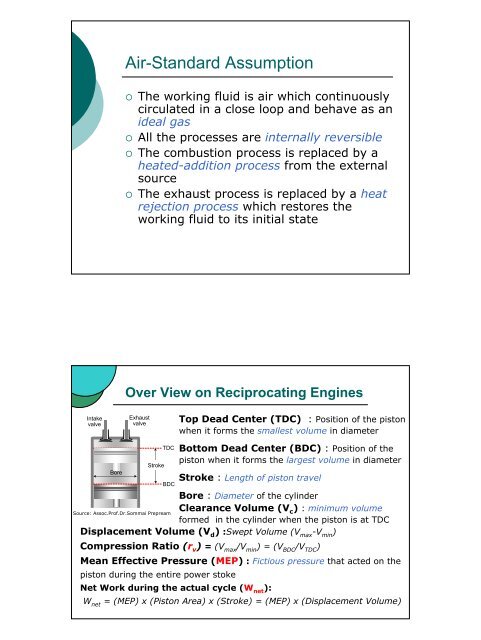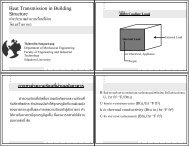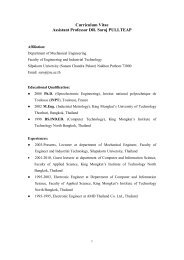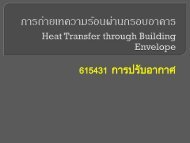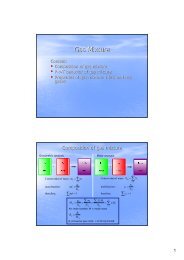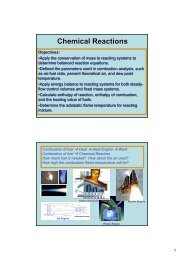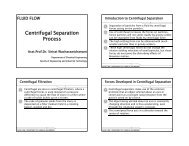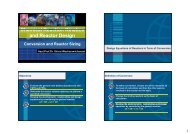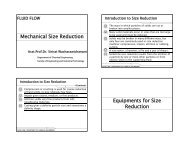Chapter 1 Gas Power Cycle
Chapter 1 Gas Power Cycle
Chapter 1 Gas Power Cycle
Create successful ePaper yourself
Turn your PDF publications into a flip-book with our unique Google optimized e-Paper software.
Intake<br />
valve<br />
Bore<br />
Air-Standard Assumption<br />
� The working fluid is air which continuously<br />
circulated in a close loop and behave as an<br />
ideal gas<br />
� All the processes are internally reversible<br />
� The combustion process is replaced by a<br />
heated-addition process from the external<br />
source<br />
� The exhaust process is replaced by a heat<br />
rejection process which restores the<br />
working fluid to its initial state<br />
Over View on Reciprocating Engines<br />
Exhaust<br />
valve<br />
Stroke<br />
TDC<br />
BDC<br />
Top Dead Center (TDC) : Position of the piston<br />
when it forms the smallest volume in diameter<br />
Bottom Dead Center (BDC) : Position of the<br />
piston when it forms the largest volume in diameter<br />
Stroke : Length of piston travel<br />
Bore : Diameter of the cylinder<br />
Clearance Volume (Vc ) : minimum volume<br />
formed in the cylinder when the piston is at TDC<br />
Displacement Volume (Vd ) :Swept Volume (Vmax-Vmin )<br />
Source: Assoc.Prof.Dr.Sommai Prepream<br />
Compression Ratio (r v ) = (V max /V min ) = (V BDC /V TDC )<br />
Mean Effective Pressure (MEP) : Fictious pressure that acted on the<br />
piston during the entire power stoke<br />
Net Work during the actual cycle (Wnet ):<br />
Wnet = (MEP) x (Piston Area) x (Stroke) = (MEP) x (Displacement Volume)


